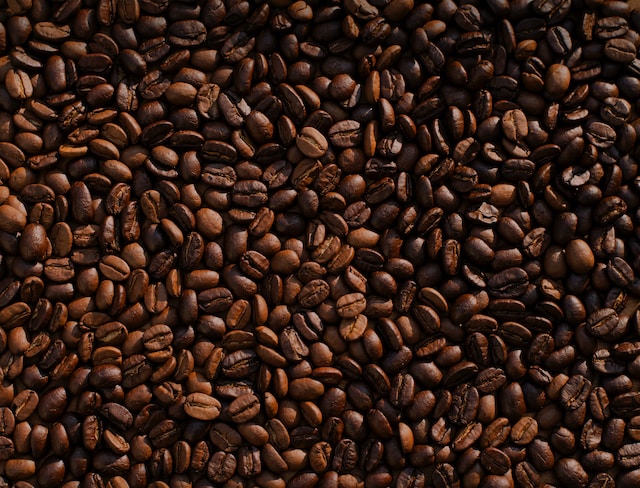W26 2025: Coffee Weekly Update

In W26 in the coffee landscape, some of the most relevant trends included:
- Colombian coffee prices held relatively firm, with expectations of a mid-year rebound driven by retention strategies and improved output.
- Vietnamese Robusta prices dropped to year-long lows amid global surplus and weak demand.
- Brazilian producers are advised to hedge or forward sell to secure margins before further price declines.
- Vietnamese exporters should diversify markets and products to reduce reliance on low-priced bulk Robusta sales.
1. Weekly News
Brazil
Harvest Surge Weighs on Prices
Brazil’s mid-year harvest is progressing steadily. According to Cooperativa Regional de Cafeicultores em Guaxupé (Cooxupé), the Conilon Robusta harvest was 31% complete by late Jun-25, down from 42% at the same time last year. Mild winter weather and low frost risk in São Paulo and Minas Gerais have improved harvest efficiency. As a result, supply has increased, putting pressure on prices: Arabica hit a 5 1/2-month low on the Intercontinental Exchange (ICE), while Robusta declined to a 13 1/4-month trough.
Despite the weaker real offering some export support, month‑on‑month (MoM) exports in May-25 dropped 36 % year‑on‑year (YoY) to 2.8 million bags. The market is now managing a classic supply‑driven downturn mid‑season, although currency and stock levels will remain key watch factors.
Colombia
Labor Rights Overshadow Production Gains
Colombia’s coffee sector is expected to post a full-year recovery, with output projected to reach around 13.2 million bags despite a 5% year-on-year (YoY) decline in April production. Meanwhile, attention is turning to persistent structural labor issues affecting pickers.. A new investigation reveals over 80 % of pickers lacking formal contracts, facing unsafe conditions and below‑minimum pay despite certifications. The government’s attempted reforms to enforce social protection through labor law overhaul were largely stripped by Congress, undercutting progress. On a positive note, Colombia’s Congress declared coffee its national beverage in W26, bolstering cultural value and potential support mechanisms for growers.
Vietnam
Exports Boom Amidst Price Weakness
Vietnam’s coffee exports surged to a record USD 5.5 billion in H1, surpassing full‐year 2024 revenue in six months and projecting approximately USD 7.5 billion by year’s end. Accelerated demand from the United States (US), the European Union (EU), Japan, South Korea, and emerging Southeast Asian markets drives growth. However, domestic green bean prices in the Central Highlands dropped to their lowest in 2025, mirroring the global slump as speculative pressure from Brazil and Indonesia intensified. Though export momentum is robust, growers are bracing for input cuts and slowed replanting if prices remain subdued.
2. Weekly Pricing
Weekly Coffee Pricing Important Exporters (USD/kg)

Yearly Change in Coffee Pricing Important Exporters (W26 2024 to W26 2025)
.png)
Brazil
Over the past week, Brazilian coffee prices remained elevated at USD 12.92 per kilogram (kg), a 5.73% week-on-week (WoW) rise and a 104.11% YoY increase, supported by stable wholesale activity and diminished supply. Domestic Arabica harvest in Brazil reached approximately 31–35% completion. This is slightly behind last year, but advancing rapidly due to drier weather, suggesting increased supply hitting markets. Additionally, logistics delays from heavy rains weighed on volumes.
In the coming week, prices are expected to trend downward slightly as supply levels improve unless frost concerns resurface. However, any surge in export demand or adverse weather may provide temporary support.
Colombia
In W26, Colombian coffee prices exhibited a bullish trend owing to diminished supplies, rising to USD 11.93/kg, a 1.79% WoW rise, and a 59.92% YoY increase. Cautious sentiment remains as producers anticipate potential La Niña precipitation impacting harvests.
Colombian prices should stabilize in W27 to slightly bearish in the short term as global Arabica prices remain under harvest pressure. However, farmers may begin securing forward contracts or holding stocks in anticipation of the expected mid-year price rally, especially if export logistics remain unthrottled.
Vietnam
In W26, Vietnamese coffee prices remained subdued at USD 3.62/kg, a 12.14% WoW drop and a 23.79% YoY decline owing to elevated inventories. Abundant harvest volumes, combined with weak demand, continue to exert downward pressure on pricing.
Continued downward pressure seems likely unless global Robusta inventories tighten or export orders surge. Prices are expected to hover near current lows. However, any regional weather-induced supply shock could trigger a sharp rebound in Robusta values.
3. Actionable Recommendations
Advance Sales and Lock In Margins Amid Brazil’s Harvest Pressure
With Brazilian Arabica prices facing downward pressure due to accelerating harvest progress and favorable weather, producers and exporters should consider forward selling or hedging part of their crop now. Locking in current prices, especially if above local production costs, can protect margins against further declines, particularly with Arabica trading near recent contract lows.
Implement Strategic Stockholding in Colombia Ahead of Expected Price Recovery
Colombian growers and cooperatives should hold or strategically pace coffee sales, as the Colombian Coffee Growers Federation (FNC) forecasts a mid-year price recovery driven by retention efforts and lower global availability of high-quality mild Arabicas. Exporters may benefit from negotiating forward contracts at anticipated higher rates, while also maintaining liquidity through short-term financing.
Seek Alternative Export Outlets or Product Diversification in Vietnam
Vietnamese Robusta growers and processors should explore alternative export channels—such as intra-Association of Southeast Asian Nations (ASEAN) markets or value-added products like soluble or specialty blends—amid falling prices and surplus pressure. With Robusta prices at a 13-month low, tapping into diversified demand (e.g., small roasters or ready-to-drink markets) may help reduce exposure to bulk price declines.
Sources: Tridge, CMB News, Journal of Commerce, Nasdaq, Barchart, Vietnam Briefing, Procurement Resource





